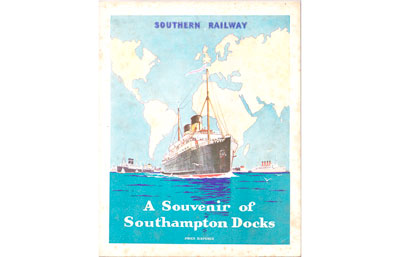Description
Starting in the days when Liverpool transatlantic liners dropped off passengers and mail by tender at Plymouth, the predecessor of the Southern, the London & South Western made determined efforts to capture a share of the trade by running fast trains to London in connection with the ships, saving many hours on the total journey time between New York and London. By developing port facilities at Southampton, the LSWR could offer an even better service (and not have to share the traffic with the GWR, who also served Plymouth) with liners berthing alongside quays for passengers to embark and disembark, instead of using tenders. Furthermore, the facilities would encourage German, French and other European liners to call, because many British travelers preferred the foreign vessels, and by joining at Southampton, they avoided having to travel to Cherbourg. Noel Coward for example always travelled via the “French Line” because “There is no damned nonsense about women and children first…”
The LSWR invested millions in developing the “Ocean Terminal” which was ready just in time to embark the BEF for France in 1914. This in itself was a remarkable achievement, with trains arriving every 12 minutes loaded with men, horses, guns, wagons ammunition and equipment from all over the UK. Not a single man or horse was injured during embarkation, and not a single gun was damaged. After the war, as explained in this booklet, the Southern invested even more, and the railway was considerably aggrieved that the 1945 Labour government took the port of Southampton away from railway control, which passed to the Docks and Inland waterways Executive. Given that a major part of the rational for nationalization was to improve transport integration, to then take ports, waterways, road transport (most canals, Pickfords, and many bus companies were either wholly or partly owned by the Railways ) and even station and on board catering away from railway control, with inadequate compensation, was sheer lunacy. As these activities were largely profitable, this was a major contributory factor in British Railways soon falling into debt.
A very attractive publication.

Reviews
There are no reviews yet.